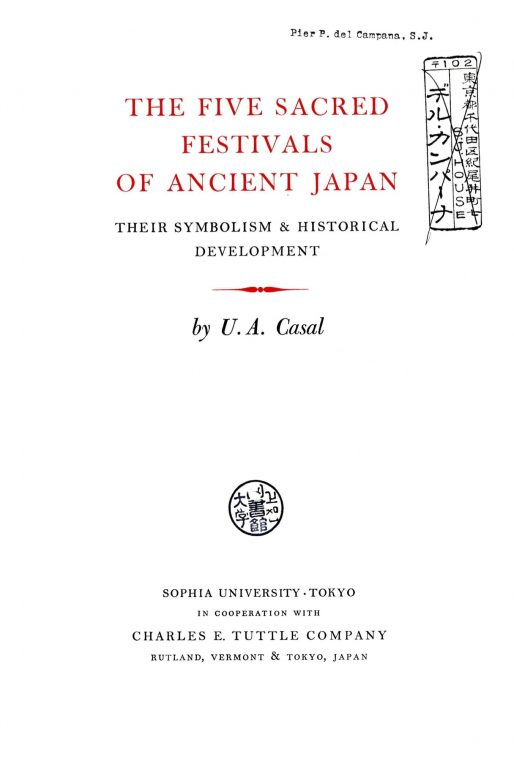The Five Sacred Festivals of Ancient Japan: Their Symbolism and Historical DevelopmentU. A. Casal
Monographs (1967) pp. 1–114
The present volume is a posthumous work of the late U.A. Casal. Mr. Casal was a Swiss businessman with a deep interest in Japanese art and folklore. He came to Japan early in 1912, the last year of the Meiji era, and spent more than fifty years living in Kobe. Here he intensified his study of Japanese art and culture, publishing the results of his research in many scholarly journals including Transactions of the Asiatic Society of Japan, Asiatische Studien, Folklore Studies, and Monumenta Nipponica. Mr. Casal’s previous book, Japanese Art Lacquers, published in 1961, gave us a very thorough artistic appraisal of the finest collections of lacquer ware existing in Japan today.
The author’s latest work, The Five Sacred Festivals of Ancient Japan, deals with the historical, religious and folk backgrounds for the great traditional festivals of Japan. These include the New Year Festival (Oshōgatsu), the Girls’ Festival (Hinamatsuri), the Boys’ Festival (Tango no sekku), the Star Festival (Tanabata), and the Crysanthemum Festival (Jūgoya).
Through Mr. Casal’s detailed descriptions the reader is able to grasp the emergence and development of these popular festivals during the decades, centuries and millenniums of bygone ages. Reading these descriptions one can perceive the author’s close affection for “things Japanese.” This affection, coupled with a scholarly mind and a great deal of literary ability, has led Mr. Casal to put forth a work of considerable worth.
1967. 114 pages.
Hardback. [Out of print]
